This is personal
Bryana Bayly knew only a few facts about the patient, details picked up in conversation on the first day when he was still able to talk, at least a little.
He rooted for Michigan State and joked about being stuck in Ann Arbor. He liked the Beatles so she played a few songs for him on her phone. Pointing to pictures, he told her the names of his kids, grandchildren, and his dog.
Bayly understood the profound significance of that connection: The man was dying of cancer and – if not for her and other student volunteers – he might be alone.
“In med school, we are taught how to run resuscitation codes, but we aren’t really taught how to manage our emotions,” she says. “Experiences like this allow you see to see the emotional side of end-of-life care, which sometimes gets lost in the medical management.”
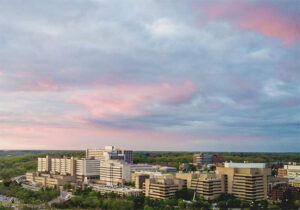
The No One Dies Alone (NODA) bedside program was nearly curtailed by coronavirus. But student volunteers reintroduced the program and adapted it for the pandemic.
A fourth-year U-M medical school student, Bayly is part of team of students who volunteered to maintain the No One Dies Alone (NODA) bedside program after it was nearly curtailed by the coronavirus pandemic. While stories of COVID patients forced into isolation during their final moments captivated the media, the problem extended to non-COVID patients too as the pandemic required hospitals to install new protocols and limit outside visitors.
U-M Social Work Program Manager Amanda Schoettinger launched NODA at Michigan Medicine in 2017 with trained community volunteers, but when the first coronavirus patients began arriving in March, the hospital closed its doors to visitors and volunteers alike. NODA’s future was in doubt, even as the need increased.
“It’s not just the institutional limitations that keep visitors from their loved ones,” says Schoettinger, LMSW. “Some people aren’t working and might not have the money to travel. Some are sick themselves. A lot of people are afraid to come to the hospital, which is understandable. This issue isn’t limited to the COVID wards.”
‘An essential part of humanity’

“Experiences like this allow you see to see the emotional side of end-of-life care, which sometimes gets lost in the medical management,” says Michigan Medicine student Bryana Bayly.
Schoettinger worked with third-year UMMS student Steven Davidson, one of the lead NODA program coordinators, to train a small group of medical students to hold vigil with dying patients. Davidson’s idea to sustain NODA using medical student volunteers followed a relative’s lengthy — and lonely — stay in the hospital this spring.
“In his three weeks as an inpatient there was almost no connection to his family. He was able to see my aunt a few times on video calls, and those sessions relied on nurses who took time they didn’t really have in order to make that happen,” Davidson says. “That experience was a big motivator.”
With clinical rotations canceled and classes moved online, medical students sought ways to get involved in COVID-19 response, both in the community and in the hospital. All student volunteer activities were coordinated through the student-driven M-Response Corps and had to be vetted for safety by administrative and clinical leaders.
“We are balancing safety with necessity,” says Nadine Ibrahim, an M-Response Corps co-director and a fourth-year UMMS student. “The unique thing about Steven’s proposal is that the program, while not a part of clinical care or management, is essential for humanity. This project in particular stood out as something that we needed to do.”
Preparing the volunteers
Davidson revamped the NODA program training, normally conducted in person, into an online course with a reflective writing component. More than a dozen student volunteers have been trained so far, and the first student-led vigils have already started. Volunteers sit in four-hour shifts with patients identified by health care staff, talking with patients whether or not they are responsive. Volunteers do web-based debriefing sessions with program leads after their first vigil and again in the event that a patient passes away in their presence. The NODA program also meets as a whole every other week for a group debriefing session to share new ideas amid a community of support and understanding.
“Having conducted vigils myself, I know how emotional it can be,” Davidson says. “Our top priority is to properly prepare our volunteers. We want to make sure they have a plan to cope and that we support them through their process.”
A resource for COVID patients
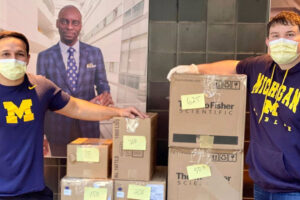
M-Response Corps volunteers helped put together 3,975 COVID-019 test kits for Michigan Medicine. (Image: mresponse_corps at Instagram.)
Because of the dangers associated with potential exposure to coronavirus, student volunteers are not able to sit vigil with COVID-positive patients. However, Davidson recently obtained tablets for NODA volunteers who plan to help coordinate webcast family visits for patients on the COVID wards.
“It is an inappropriate risk to have volunteers in COVID rooms, but with the video conference technology available we see an opportunity to facilitate some interaction,” Davidson says. “The front-line staff would still need to be in the room to set it up, but [NODA] could take the initiative behind-the-scenes to handle the logistics of coordinating with the family, scheduling, and determining which technology to use.
“It takes an emotional toll not just on the families, but also on the providers who care so much but aren’t able to take 15 minutes and make three phone calls to arrange a video chat — though many of them still do.”
Offering assistance supports the family and the busy front-line care teams, while also providing a life-changing learning opportunity for the student volunteers, Schoettinger says.“With the end-of-life care, they talk a little bit about it in medical school but it’s not necessarily something all students experience as part of their rotations,” she says. “This program gives them an opportunity to fully experience it — being connected to this patient at the end of their life as a person, not just a physician. That’s a powerful learning experience.”
‘You’ve seen the pictures and learned the names’
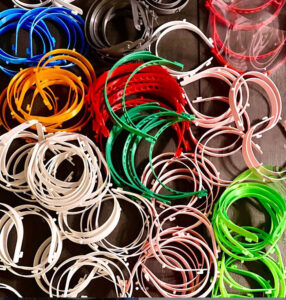
M-Response Corps members also have been creating 3D-printed face shields and organizing scrub collections/donations. (Image: mresponse_corps at Instagram.)
Six months into the COVID-19 pandemic, many of the visitor limitations have been eased but restrictions on community volunteers and other non-essential personnel at UMHS remain in place. NODA remains entirely reliant on a dozen or so medical student volunteers. In most cases, the students fill in at night or other odd hours when family members aren’t able to be there.
Such was the case with Bryana Bayly’s vigil with the Beatles fan who cheered for MSU. The man’s relatives had delivered family photographs to the room, pictures of football games, dance recitals, vacations. In the times when the man was awake, Bayly would take the pictures to the bedside and look through them with him. At the end of the shift, she would introduce the next volunteer and say goodbye until next time.
She sat with him five separate times. When the end came, she received an alert, as does every student who participates in a particular vigil.
“We get a notification right away to let us know that the service is no longer needed,” Bayly says. “On the one hand, it’s hard because you’ve seen the pictures and learned the names. The more time you spent with them, the more connected you feel. But on the other hand, you know for certain they weren’t alone. That makes it a really rewarding experience.”
(Lead image credit: Joe Hallisy)

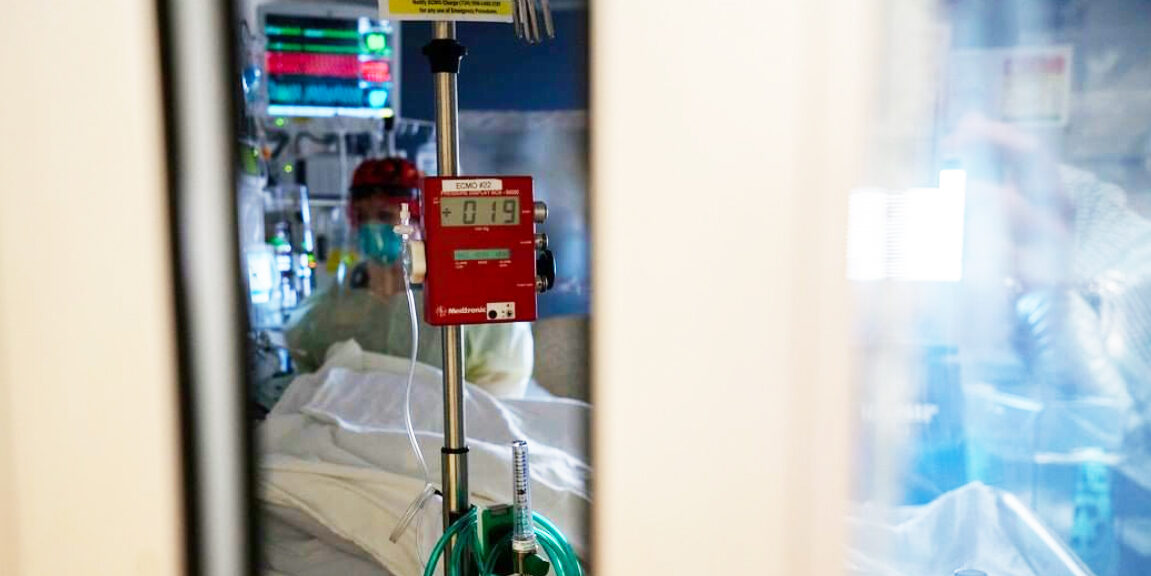
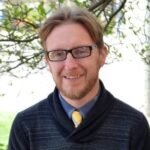

Bob Shapiro - 1981
Being there for the humanity, not just the medical management, is a blessing beyond words.
Reply
Kathryn Hollett - 1968
This is an amazing, compassionate program. Living in Jacksonville, FL, we are fortunate to have the Mayo Clinic here, and consider it “The Gold Standard”. However, I have never heard of a program like NODA, and am proud of everyone associated with it. This certainly exemplifies “caring” for patients!
Our niece is part of the medical team at UM hospitals currently completing her nurse practitioner degree following earning her nursing degree at UM in the mid- nineties.
I will look forward to updates on this meaningful endeavor.
Reply
Anne Gordon - 00
Kathryn Hollett. No One Dies Alone began in Eugene, Oregon at Sacred Heart Medical Center (PeaceHealth) in 2002. Since that time PeaceHealth has provided material and consulting support for those wishing to start their own NODA programs – there are now more than 500 such programs in North America alone, and many others worldwide. I have been a NODA volunteer for eight years and was the Program Coordinator from 2014 to early 2020. The Program Coordinator position was eliminated in budget cuts and a few weeks later the program was placed on hiatus due to the pandemic. I am pleased to hear of this innovative approach to serving NODA patients. It is a program that touches people’s compassionate hearts.
Reply
Anne Gordon - 0000
Also wish to clarify I am not a University of Michigan alum, though years of graduation appeared as 00 in my reply to Kathryn Hollett. Thank you.
Reply
Scott Szotko - '99
Moved to tears…
Being “human” doesn’t cost a cent, is worth more than all the gold and diamonds in the world, and leaves a lasting impact on all those involved. From the beginning to the end of life, this is what really matters!
Reply
michael salwitz - 1970 Rackham, MS
One of the most moving and poignant moments in my career as an ED physician was the time I spent holding the hand of a dying patient. The patient had suffered a catastrophic brain bleed that rendered him unconscious and without hope of surgical resuscitation. No family appeared and it was quite apparent that death was imminent. The ED nurse and I closed the curtains around the man and notwithstanding the chaos of a busy big city ED sat beside him as he took his final breaths. We both held his hand. and overcome with emotion we both began to cry as we shepherded this man as he passed. It was a moment I shall never forget and i felt humbled and honored to be with him in his final moments. The program that MS. Shoettinger and UM Med have begun is to be lauded and all students in the profession would do well to take advantage of the opportunity it presents.
Reply
Claire Russell - 1962
This is one more reason why I am so thankful to be a U of M grad. My 4 years in AA provided much of the foundation of my life as I moved forward. Since I graduated, I have been back only once! (I live in Seattle) but I cherish and value all I learned and experienced during my time on campus. I guess I don’t really need to return; I took it all with me!
Reply
Don Burgess - 1972
Great to see UM med school seeing the critical support our dying patients need as physical life is slipping away. I’m a hospice chaplain in AZ. Our NODA program is called 11th Hour as volunteers are trained to support and comfort the dying. We also assist medical school students in comfort and emotional support for hospice patients.
Reply